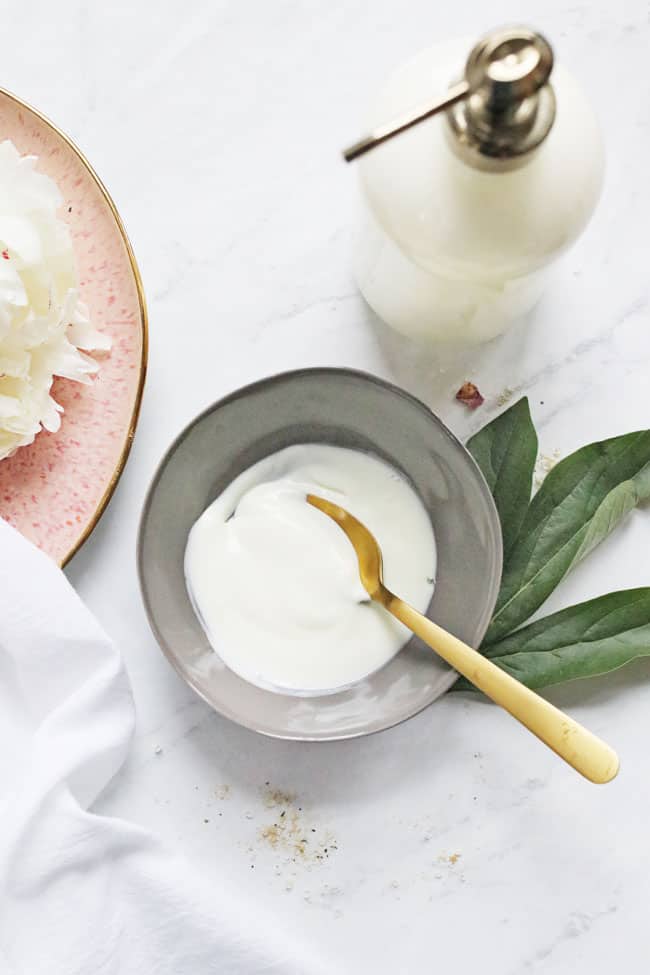
Homemade Vitamin E Scar Lotion
I wouldn’t exactly consider myself a daredevil, but every now and then I get a wild hair and do something a little, shall we say, not smart. Like that time my husband and I went whitewater rafting in Colorado in June. Little did we know, but by late spring, the mountain snow in Colorado begins melting and the runoff creates huge, turbulent, angry rivers. Although I made it out alive, it took weeks and weeks to heal my cut, bruised, and battered body. And while the scrapes and bruises have diminished and I’m able to laugh about it in hindsight, I’m still nursing the scars from that not-so-smart idea of mine.
Recently, I have been using this all-natural DIY scar lotion to help diminish scars and fade blemished skin. It’s loaded with ingredients like wheat germ, vitamin E, and aloe vera, so you can kiss those minor scars goodbye without the harsh chemicals.
Homemade Scar Lotion
Most over-the-counter scar creams are loaded with chemicals, parabens, and fragrances that can cause skin allergies, irritation, and a wide range of health problems. While some of them might have been proven to help fade scars, they’re definitely not something you want to put on your skin every day. But that doesn’t mean you’re stuck with those pesky scars.
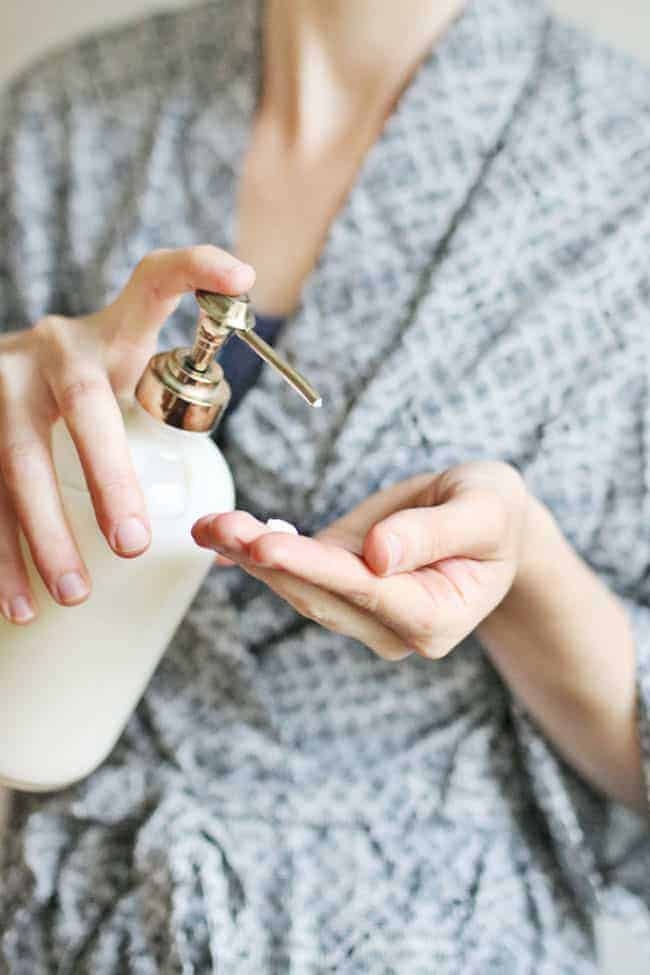
It turns out that lots of natural products can also be effective at reducing scar tissue, helping make scars appear less noticeable. While the list is long, here are a few of my favorite natural ingredients for scars:
Coconut oil
The omega-3 fatty acids and antioxidants in coconut oil have been shown to inhibit the cells that cause keloid scar tissue formation [source]. It’s also super moisturizing [source], which can help minimize the appearance of scars.
Frankincense
Frankincense oil is a potent anti-inflammatory [source] that has been shown to play a role in skin remodeling after injuries [source]. But it’s also said to help reduce the appearance of scars, likely because it inhibits the action of inflammatory cells that leads to scarring. It can be applied straight to the skin or mixed with a carrier oil to lessen the intensity.
Aloe Vera
Research has shown that aloe vera promotes wound healing. It has been used throughout history for the treatment of skin conditions because it conserves moisture and reduces the inflammatory response [source]. Due to these natural effects, applying it to healing skin may help lessen the inflammation associated with scar tissue formation and minimize its appearance.
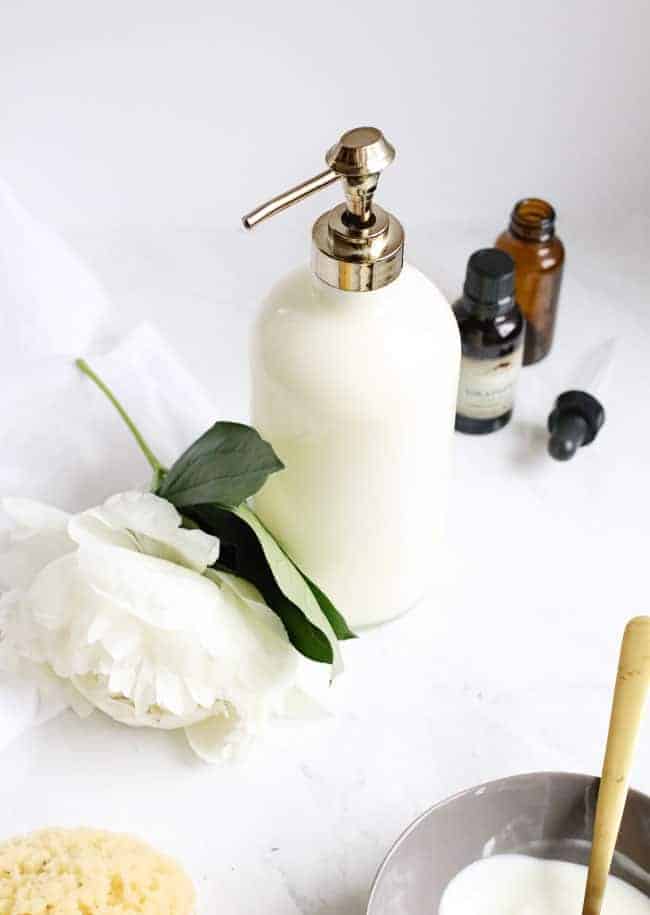
Wheat Germ
Because wheat germ oil is rich in vitamin E, squalene, and omega-3 and -6 fatty acids [source], it can help regenerate, nourish, and hydrate skin. Massaging wheat germ oil into scars can accelerate blood circulation, which may help to rejuvenate the skin underneath and improve the absorption of vital nutrients.
Rosehip
Derived from rose seeds, rosehip oil is a natural source of fatty acids and vitamins that fight the signs of aging and smooth out the skin. A 2015 study on the treatment of patients with post-surgical scars showed the application of rosehip oil twice daily reduced redness and discoloration [source]. It’s also said to help fade dark spots and stretch marks—all while giving your skin a healthy dose of hydration and a youthful glow.
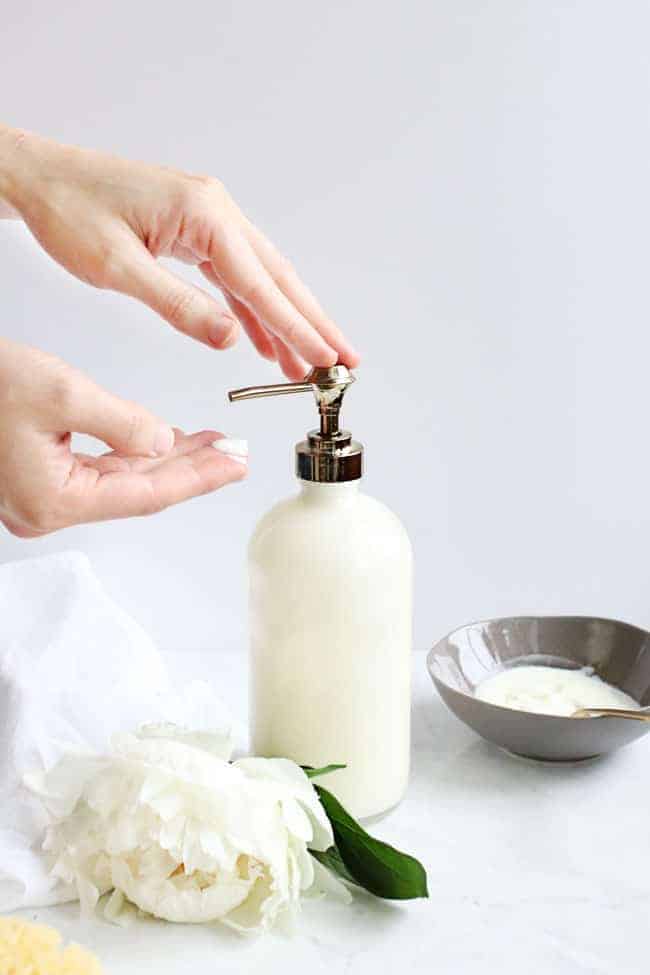
Although this natural scar lotion is loaded with nourishing oils, when mixed together, these ingredients form a light, nongreasy lotion—perfect for rubbing into scars or healing injured skin. Plus, it’s great for pouring into a pump bottle so you can dole out the perfect-sized portion whenever you need it. Simply apply a dime-sized amount 2 to 3 times a day and let the ingredients work their magic. If you’re using it specifically to reduce scars, try massaging the lotion into your skin for 5 minutes to help moisturize and break down the scar tissue to help make it look less noticeable.
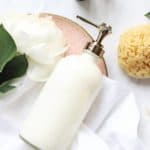
Homemade Vitamin E Scar Lotion
Say goodbye to those unsightly scars naturally with this healing homemade vitamin E scar lotion made with wheat germ oil.
Yield: 12 ounces
Cost: $8
Notes
Store your scar lotion in the bathroom cabinet (no need to refrigerate) and use within 3 months.
136
